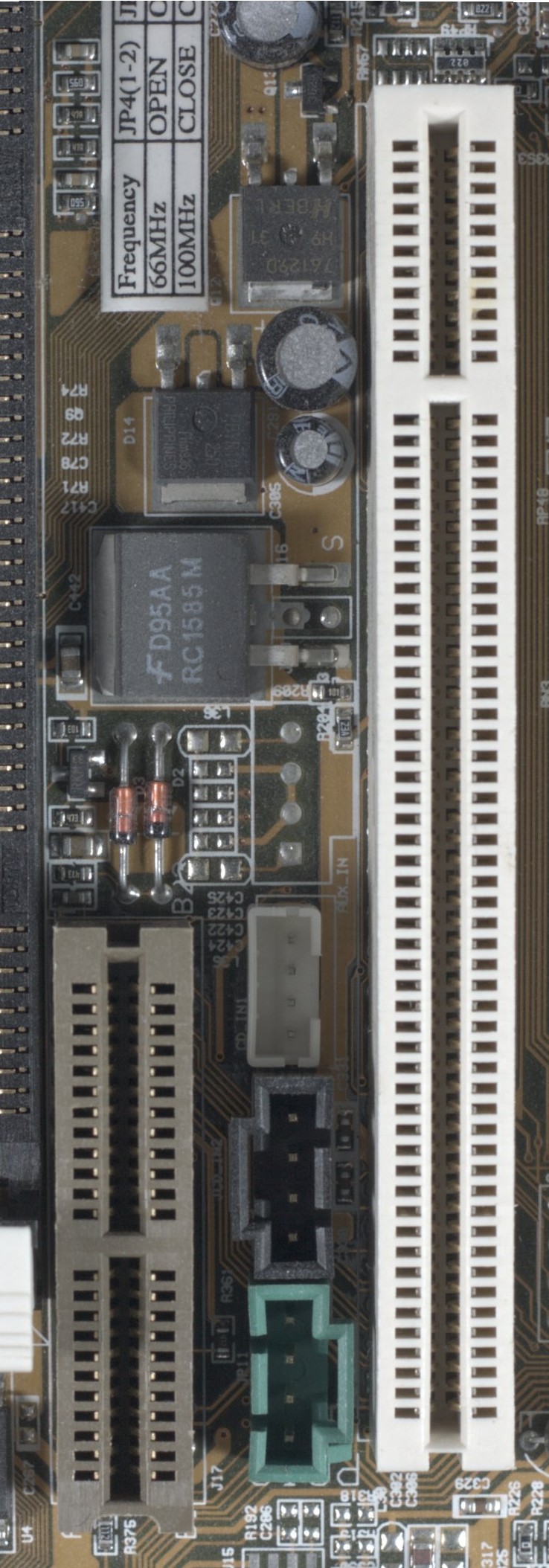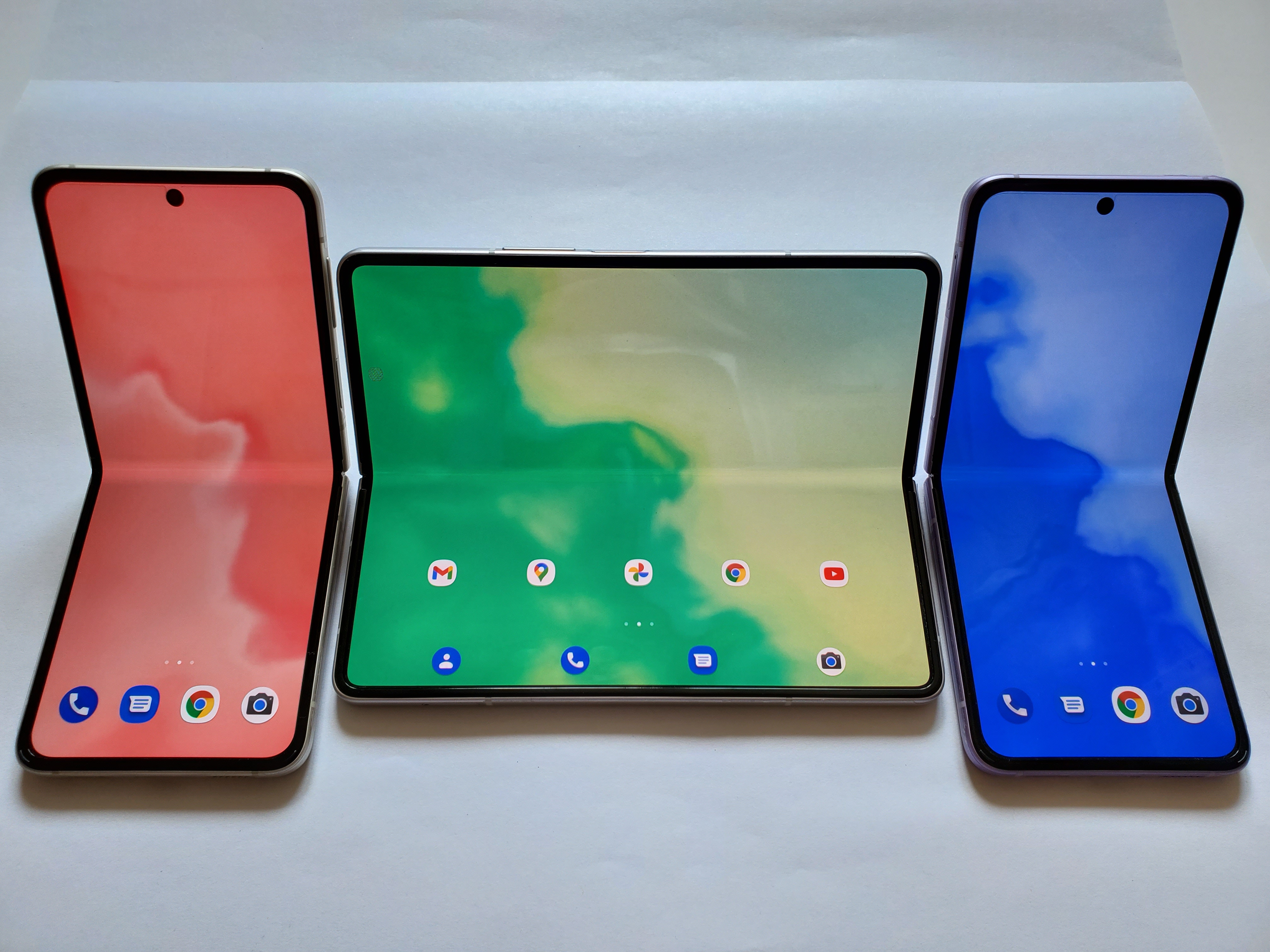|
Mobile Daughter Card
The mobile daughter card, also known as an MDC or CDC (communications daughter card), is a notebook version of the AMR slot on the motherboard of a desktop computer. It is designed to interface with special Ethernet (EDC), modem (MDC) or bluetooth (BDC) cards. Intel MDC specification 1.0 In 1999, Intel published a specification for mobile audio/modem daughter cards. The document defines a standard connector (AMP* 3-179397-0), mechanical elements including several form factors, and electrical interface. The 30-pin connector carries power, several audio channels and AC-Link serial data. Up to two AC'97 codecs are supported on such a card. Several form factors are specified: * 45 × 27 mm * 45 × 37 mm * 55 × 27 mm with RJ11 jack * 55 × 37 mm with RJ11 jack * 45 × 55 mm * 45 × 70 mm 30-pin AMP* 3-179397-0 pinout See also * Daughter board In computing, an expansion card (also called an expansion board, adapter card, peripheral card or a ... [...More Info...] [...Related Items...] OR: [Wikipedia] [Google] [Baidu] |
Audio/modem Riser
The audio/modem riser (AMR) is a riser expansion slot found on the motherboards of some Pentium III, Pentium 4, Duron, and Athlon personal computers. It was designed by Intel to interface with chipsets and provide analog functionality, such as sound cards and modems, on an expansion card. Technology Physically, it has two rows of 23 pins, making 46 pins total. Three drawbacks of AMR are that it eliminates one PCI slot, it is not plug and play, and it does not allow for hardware accelerated cards (only software-based). Technologically, it has been superseded by the Advanced Communications Riser (ACR) and Intel's own communications and networking riser (CNR). However, riser technologies in general never really took off. Modems generally remained as PCI cards while audio and network interfaces were integrated on to motherboards. See also * Advanced Communications Riser (ACR) * GeoPort * Mobile Daughter Card The mobile daughter card, also known as an MDC or CDC (communications d ... [...More Info...] [...Related Items...] OR: [Wikipedia] [Google] [Baidu] |
Motherboard
A motherboard (also called mainboard, main circuit board, mb, mboard, backplane board, base board, system board, logic board (only in Apple computers) or mobo) is the main printed circuit board (PCB) in general-purpose computers and other expandable systems. It holds and allows communication between many of the crucial electronic components of a system, such as the central processing unit (CPU) and memory, and provides connectors for other peripherals. Unlike a backplane, a motherboard usually contains significant sub-systems, such as the central processor, the chipset's input/output and memory controllers, interface connectors, and other components integrated for general use. ''Motherboard'' means specifically a PCB with expansion capabilities. As the name suggests, this board is often referred to as the "mother" of all components attached to it, which often include peripherals, interface cards, and daughterboards: sound cards, video cards, network cards, host bus adapters, TV t ... [...More Info...] [...Related Items...] OR: [Wikipedia] [Google] [Baidu] |
Desktop Computer
A desktop computer (often abbreviated desktop) is a personal computer designed for regular use at a single location on or near a desk due to its size and power requirements. The most common configuration has a case that houses the power supply, motherboard (a printed circuit board with a microprocessor as the central processing unit, memory, bus, certain peripherals and other electronic components), disk storage (usually one or more hard disk drives, solid state drives, optical disc drives, and in early models a floppy disk drive); a keyboard and mouse for input; and a computer monitor, speakers, and, often, a printer for output. The case may be oriented horizontally or vertically and placed either underneath, beside, or on top of a desk. Personal computers with their cases oriented vertically are referred to as towers. As the majority of cases offered since the mid-1990s are in this form factor, the term ''desktop'' has been retronymically used to refer to modern cases offer ... [...More Info...] [...Related Items...] OR: [Wikipedia] [Google] [Baidu] |
Ethernet
Ethernet () is a family of wired computer networking technologies commonly used in local area networks (LAN), metropolitan area networks (MAN) and wide area networks (WAN). It was commercially introduced in 1980 and first standardized in 1983 as IEEE 802.3. Ethernet has since been refined to support higher bit rates, a greater number of nodes, and longer link distances, but retains much backward compatibility. Over time, Ethernet has largely replaced competing wired LAN technologies such as Token Ring, FDDI and ARCNET. The original 10BASE5 Ethernet uses coaxial cable as a shared medium, while the newer Ethernet variants use twisted pair and fiber optic links in conjunction with switches. Over the course of its history, Ethernet data transfer rates have been increased from the original to the latest , with rates up to under development. The Ethernet standards include several wiring and signaling variants of the OSI physical layer. Systems communicating over Ethernet ... [...More Info...] [...Related Items...] OR: [Wikipedia] [Google] [Baidu] |
Modem
A modulator-demodulator or modem is a computer hardware device that converts data from a digital format into a format suitable for an analog transmission medium such as telephone or radio. A modem transmits data by Modulation#Digital modulation methods, modulating one or more carrier wave signals to encode digital information, while the receiver Demodulation, demodulates the signal to recreate the original digital information. The goal is to produce a Signal (electronics), signal that can be transmitted easily and decoded reliably. Modems can be used with almost any means of transmitting analog signals, from light-emitting diodes to radio. Early modems were devices that used audible sounds suitable for transmission over traditional telephone systems and leased lines. These generally operated at 110 or 300 bits per second (bit/s), and the connection between devices was normally manual, using an attached telephone handset. By the 1970s, higher speeds of 1,200 and 2,400 ... [...More Info...] [...Related Items...] OR: [Wikipedia] [Google] [Baidu] |
Bluetooth
Bluetooth is a short-range wireless technology standard that is used for exchanging data between fixed and mobile devices over short distances and building personal area networks (PANs). In the most widely used mode, transmission power is limited to 2.5 milliwatts, giving it a very short range of up to . It employs UHF radio waves in the ISM bands, from 2.402GHz to 2.48GHz. It is mainly used as an alternative to wire connections, to exchange files between nearby portable devices and connect cell phones and music players with wireless headphones. Bluetooth is managed by the Bluetooth Special Interest Group (SIG), which has more than 35,000 member companies in the areas of telecommunication, computing, networking, and consumer electronics. The IEEE standardized Bluetooth as IEEE 802.15.1, but no longer maintains the standard. The Bluetooth SIG oversees development of the specification, manages the qualification program, and protects the trademarks. A manufacturer must meet ... [...More Info...] [...Related Items...] OR: [Wikipedia] [Google] [Baidu] |
AC'97
AC'97 (''Audio Codec '97;'' also MC'97 for ''Modem Codec '97'') is an Sound reproduction, audio codec standard developed by Intel Architecture Labs in 1997. The standard was used in motherboards, modems, and sound cards. The specification covers two types of components, and the AC-Link digital interface between them: # an AC'97 ''digital controller'' (DC97), which is built into the Southbridge (computing), southbridge of the chipset, and # an AC'97 audio and modem ''codec'', available from several vendors, which contains the analog components of the architecture. AC'97 defines a high-quality, 16- or 20-bit audio architecture with 5.1 surround sound support for the PC. AC'97 supports a 96 kHz sampling rate at 20-bit stereo Audio bit depth, resolution and a 48 kHz sampling rate at 20-bit stereo resolution for multichannel recording and playback. Integrated audio is implemented with the AC'97 Codec on the motherboard, a communications and networking riser card, or an audi ... [...More Info...] [...Related Items...] OR: [Wikipedia] [Google] [Baidu] |
RJ11, RJ14, RJ25
A registered jack (RJ) is a standardized telecommunication network interface for connecting voice and data equipment to a service provided by a local exchange carrier or long distance carrier. Registration interfaces were first defined in the ''Universal Service Ordering Code'' (USOC) system of the Bell System in the United States for complying with the registration program for customer-supplied telephone equipment mandated by the Federal Communications Commission (FCC) in the 1970s. They were subsequently codified in title 47 of the Code of Federal Regulations Part 68. Registered jack connections began to see use after their invention in 1973 by Bell Labs. The specification includes physical construction, wiring, and signal semantics. Accordingly, registered jacks are primarily named by the letters ''RJ'', followed by two digits that express the type. Additional letter suffixes indicate minor variations. For example, RJ11, RJ14, and RJ25 are the most commonly used interfaces ... [...More Info...] [...Related Items...] OR: [Wikipedia] [Google] [Baidu] |
Daughter Board
In computing, an expansion card (also called an expansion board, adapter card, peripheral card or accessory card) is a printed circuit board that can be inserted into an electrical connector, or expansion slot (also referred to as a bus slot) on a computer's motherboard (see also backplane) to add functionality to a computer system. Sometimes the design of the computer's case and motherboard involves placing most (or all) of these slots onto a separate, removable card. Typically such cards are referred to as a riser card in part because they project upward from the board and allow expansion cards to be placed above and parallel to the motherboard. Expansion cards allow the capabilities and interfaces of a computer system to be extended or supplemented in a way appropriate to the tasks it will perform. For example, a high-speed multi-channel data acquisition system would be of no use in a personal computer used for bookkeeping, but might be a key part of a system used for ind ... [...More Info...] [...Related Items...] OR: [Wikipedia] [Google] [Baidu] |
Mobile Computers
Mobile computing is human–computer interaction in which a computer is expected to be transported during normal usage, which allows for the transmission of data, voice, and video. Mobile computing involves mobile communication, mobile hardware, and mobile software. Communication issues include ad hoc networks and infrastructure networks as well as communication properties, protocols, data formats, and concrete technologies. Hardware includes mobile devices or device components. Mobile software deals with the characteristics and requirements of mobile applications. Main principles * Portability: Devices/nodes connected within the mobile computing system should facilitate mobility. These devices may have limited device capabilities and limited power supply but should have a sufficient processing capability and physical portability to operate in a movable environment. * Connectivity: This defines the quality of service (QoS) of the network connectivity. In a mobile computing ... [...More Info...] [...Related Items...] OR: [Wikipedia] [Google] [Baidu] |








